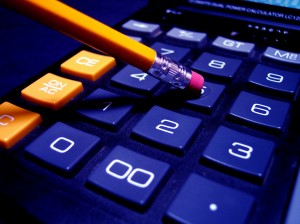 #4: Create a spending plan and stick to it
#4: Create a spending plan and stick to it
Devising a money plan sounds about as much fun as having a root canal, right?
I won’t sugar coat: it takes effort, focus, and willingness but I think of my spending plan as something I do to keep myself well. It’s up there with going to the dentist, getting haircuts, and taking Chick-Boxing classes. I choose to adorn myself with self-care because I honor and love myself. My spending plan is part of my self-care options.
A spending plan is what guides you in day-to-day spending. Rather than call it a budget, (so punitive, right?!) I prefer “spending plan,” a catalog of what monies are coming in and going out.
The plan is a simple, common sense approach that has gotten lost in the shuffle of today’s sophisticated, sometimes confusing, money tools. A lot of people use the numbers on their online banking account to guide them but that is not a spending plan.
Where to Start
Before you rush to any Internet or software-based tool*, write down on paper (or better use a notebook to get rid of those annoying little scraps of paper) what your spending plan is—
- What money’s coming in and when
- What your projected spending in various categories will be
Write at the top:
- The month
- Income expected
- Spending categories: Mortgage or Rent, Groceries, Cable, Electric, Commute, Real Estate Taxes, Medical, etc.
I divide my categories into Fixed–expected monthly or annual bills. And Cash–categories I can control such as Groceries or Clothing.
I have 47 categories—I really like to break them down. I divide Food, for instance, into Groceries, Dinners Out, Lunch, Breakfast, Take Out, and Snacks. You might only have 15 categories. (Sometimes categories overlap but do your best. There are no spending plan police.)
When I add the Cash expenses to my spending plan, I consolidate these many categories into one number. So alongside my Fixed Expenses, I list a Cash Expense category of one number, say, $1,500/month, which is the total of my Cash Expense line.
Sample—Alexandra’s Spending Plan
Month: July 2014
Income:
$4,000 — $2,000 on 7/1; $2,000 on the 7/15
Outflow:
Mortgage: $1,000
Real EstateTaxes: $250
Heating: $250 (yearly budget)
Car Payment: $250
Car Insurance: $100
Credit Card Payment: $125
Cable: $125
Electricity: $75
Cell Phone: $80
Savings: $200
Charity/Organizations: $45
Cash (Envelopes): $1,500
Getting There
The idea, of course, is to get the Income and Outflow to be equal. If you are new to this, be patient. You will not develop a spending plan in one sitting. In fact, your plan may take weeks or months to develop and it is a fluid tool. If you get frustrated, take a break. If it feels overwhelming, consider doing the set-up with a friend you trust or who has good money habits.
To wrangle my spending, I use a cash envelope system—old school, yes. But it works for me.
The envelope system, which my mother used and I never bothered with until I found myself in financial distress (Geez, if only I’d listened), works like this: Once you have your projected Cash Categories (non-Fixed), slip the dollars you want to allocate into an envelope—the plain white ones or virtual envelopes.
A virtual envelope is a place online where you can see how much you have in a particular category. For instance, some people use a bank, money site, or app* that lets them create categories and move dollars into that category. Some people arrange their virtual envelopes through an online bank that lets them have multiple savings accounts where money can be transferred easily into checking, and then spent through a debit card.
The beauty of the envelope system is that the onus for red- or green-lighting spending rests with the envelope. “Do I have enough in the envelope?” dictates the decision.
The envelope system works! It is the best way I know of to combat over-spending or vague money management—or the “Gosh I never know where my money goes” school of managing.
One last word: to have a robust and useable spending plan, write down every dollar you spend. Then you will be using realistic numbers in your plan. Another one of these simple but not easy actions. I keep my tally in my iPhone notes.
Good luck! Please share your comments and experiences. I look forward to them.
*Once you’ve got a committed-to-paper spending plan, you can maintain it by plugging your numbers into money tools offered on such sites as Mint.com, Mevelopes, Goodbudget, etc. You can also purchase personal finance software such as Quicken or create your own system with Excel.
Wow! Thanks. The word budget has always left me cold but devising a spending plan, now that’s seeing the a glass half full and gives me a feeling of control rather than leaving me feeling deprived. Not to mention thinking of it as a part of self-care, that’s really helpful.
I’d love to hear more about how you can make the writing down everything you spend part more palatable.
Love the envelope system. ( And I thought I was the only person who did.)
Another great addition to your blog, Janet.